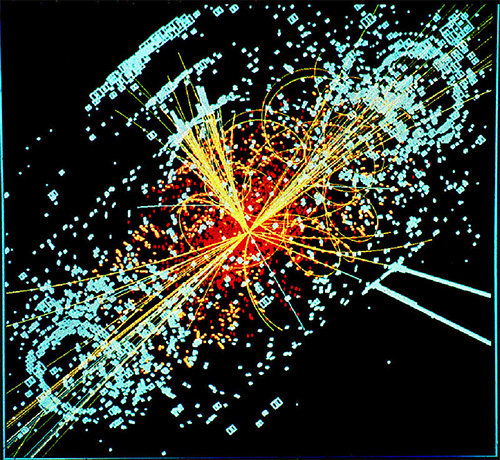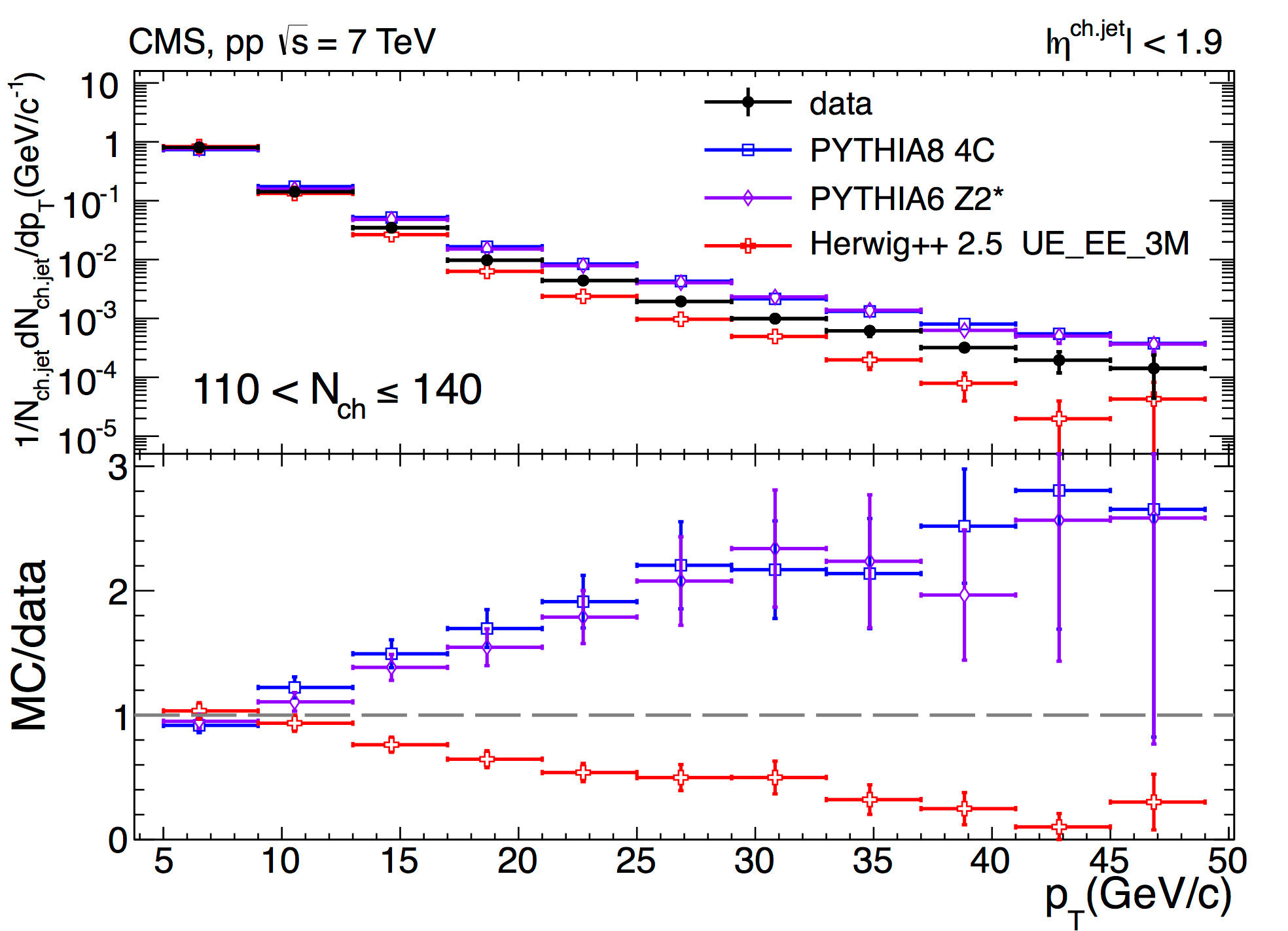CMS - Analysis of experimental data

The CMS MEPhI group actively participates in data analysis. The research area of the group encompasses processes resulting in high particle multiplicities in proton-proton and heavy ion collisions. Such studies help to understand fundamental laws of quantum chromodynamics and also can serve for improving precision of measurement of hard processes. There are few high-impact papers where contribution of the group is significant or dominant.
Ridge effect
The group participated in data analysis of proton-proton collisions with high charged-particle multiplicities. In such events, two-dimensional correlation function for particle pairs showed so called “ridge” structure extending to |∆η| of at least 4 units at ∆φ ≈ 0. This is a novel feature of the data which has never been seen in two-particle correlation functions in pp collisions and is reminiscent of heavy in collisions. Simulations using most successful MC models of pp collisions do not predict such an effect.

The figure shows two-dimensional two-particle correlation function in space of pseudorapidity and azimuthal angle differences for pp collisions at center-of-mass energy of 7 TeV: а) in minimum bias event for particles with pT > 0.1 GeV/c b) in minimum bias event for particles with 1 < pT < 3 GeV/c c) events Nch >110 for particles with pT > 0.1 GeV/c d) events Nch >110 for particles with 1 < pT < 3 GeV/c
Fig. d clearly shows significant “ridge”-like structure emerges at ∆φ ≈ 0 extending to |∆η| of at least 4 units.
Relevant publications:
CMS Collaboration «Observation of Long-Range Near-Side Angular Correlations in Proton-Proton Collisions at the LHC» JHEP 1009:091,2010
CMS Collaboration «Observation of Long-Range Near-Side Angular Correlations in Proton-Proton Collisions at the LHC» JHEP 1009:091,2010
Large scale (flow) correlation
The large scale correlations of emitted charged particles is an important feature of the hot, dense medium produced in heavy-ion collisions, and has contributed to the suggestion of a strongly coupled quark-gluon plasma (sQGP) being produced in nucleus-nucleus collisions at RHIC. Therefore, same measurements were key point in heavy-ion program of CMS experiment at LHC, where center-of-mass energy was √sNN = 2.76TeV, that was 30 times higher than at RHIC. There are many approaches/techniques to measure flow correlations, each having its advantges. The analysis was carried out by MEPhi group in collaboration with Massachusetts Institute of Technology, Kansas State University, and Vanderbilt University.
Relevant publications:
CMS Collaboration «Measurement of the elliptic anisotropy of charged particles produced in PbPb collisions at \sqrt(S_{NN})=2.76 TeV», Phys. Rev. C 87 014902
Jet and underlying event properties as a function of charged-particle multiplicity in proton–proton collisions at √s = 7 TeV
Guided by dicovery «ridge» effect, MEPhI group proposed and carried out comprehensive analysis of event properties as a function of charged-particle multiplicities. It was found that MC models of pp collisions could not describe multiplicity dependencies. Especially striking difference was observed for hard-jet yield at high multiplicities.

The figure shows inclusive jet pT spectrum for events with 110 < Nch < 140.
One can clearly see that MC event generators show as twice more high-pT jets compared to the experimental data. Such jet suppression may mean similarity of high-multiplicity pp collision to heavy-ion one and, at least, shows that current models need serious tuning of parameters or even including new model ingridients.
Relevant publications:
CMS Collaboration «Jet and underlying event properties as a function of particle multiplicity in proton-proton collisions at sqrt(s) = 7 TeV» Eur. Phys. J. C 73 (2013) 2674
Ongiong works and plans
Currently, the group is studying dijet moemntun imbalance in high-multiplicity pp collisions. Also, the group is preparing research program for future LHC runs, where the center of mass-of-mass energy will increase almost twice that gives a great chance for new discoveries.
Contact Person:
Maxim Azarkin
mazarkin@cern.ch

